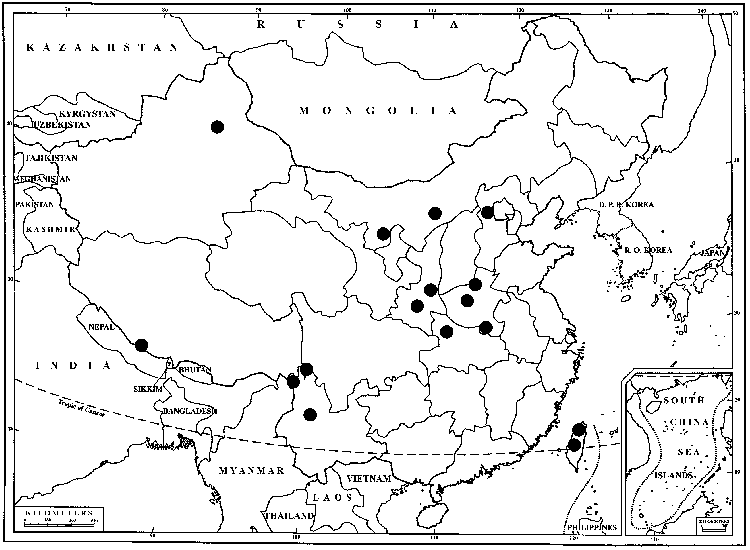Didymodon fallax
Phytologia 41: 28. 1978,.
Plants green to redbrown. Stems to 2.5 cm, central strand present. Stem-leaves appressed to weakly spreading when dry, spreading to spreading-recurved and keeled when moist, monomorphic, ovate-triangular to lanceolate, adaxially grooved along costa, 0.6–2 (–2.5) mm, base scarcely differentiated in shape to ovate, margins nearly plane to recurved at mid leaf, entire, apex acute, not fragile; costa short-excurrent in an often papillose mucro, tapering and considerably wider at the base, pad of cells absent, adaxial costal cells elongate, 2–4 cells wide at mid leaf, guide cells in 1 layer; basal laminal cells little differentiated, walls usually thickened, quadrate or very shortrectangular; distal laminal cells 13–15 µm wide, 1: 1, papillae absent or simple, 1–3 centered over lumens, lumens usually rounded and often angular, walls thin to irregularly thickened, convex on both sides, 1-stratose. Specialized asexual reproduction specialized structures absent. Seta 0.6–1.2 cm. Capsule 0.8–1.5 mm; peristome teeth 16, linear, cleft to near base, twisted counterclockwise once or occasionally twice, 800–1500 µm. Spores 7–9 µm. Distal laminal KOH reaction red-or yellowbrown, occasionally orangebrown.
Phenology: Capsules mature throughout year.
Habitat: Soil, silt, conglomerate, dolomite, sandstone, concrete, culverts, gypsum, shale, calcareous rock
Elevation: moderate to high elevations (200-3300 m)
Distribution

Alta., B.C., Man., N.B., Nfld. and Labr. (Nfld.), N.W.T., N.S., Ont., P.E.I., Que., Sask., Yukon, Alaska, Calif., Conn., Del., Idaho, Ill., Ind., Iowa, Kans., Ky., Mass., Mich., Minn., Miss., Mo., Mont., N.H., N.J., N.Mex., N.Y., N.Dak., Ohio, Pa., Tenn., Tex., Utah, Vt., Va., Wis., Wyo., Mexico, Europe, Asia, n Africa
Discussion
In Didymodon fallax, the elongate cells on the adaxial surface of the costa and the usually rounded lumens of the distal laminal cells are characteristic. Hymenostylium recurvirostrum is similar in these respects and could be mistaken for D. fallax when sterile, but that species lacks a stem central strand (at least in temperate areas) and the median laminal cells are larger than those of the marginal. Ditrichum flexicaule may be mistaken for this species but has rather strongly serrulate distal margins and is always clear yellow in KOH, never with an orange cast. Didymodon asperifolius is similar in general morphology but has quadrate or short-rectangular adaxial costal cells. Didymodon fallax intergrades to some extent with D. ferrugineus and D. maximus. Thick laminal cell walls are correlated with lack of papillae in all these species. Robust collections from hyperoceanic areas, e.g., Newfoundland and British Columbia, with long (to 2.5 mm) leaves and proximally very broad costae (to 150 µm) have much the appearance of the European D. spadiceus (Mitten) Limpricht, but differ by the long (to 800 µm) twisted peristome and margins recurved commonly to near the apex. The leaves of D. fallax, being somewhat keeled though not strongly recurved, have the grooved costa of D. vinealis but plants may be placed correctly by the elongate adaxial costal cells. Ceratodon purpureus may be mistaken for D. fallax, but the former has a deep, clear yellow color in KOH solution and weakly serrulate distal leaf margins.
Selected References
None.
Lower Taxa
"um" is not declared as a valid unit of measurement for this property."um" is not declared as a valid unit of measurement for this property.